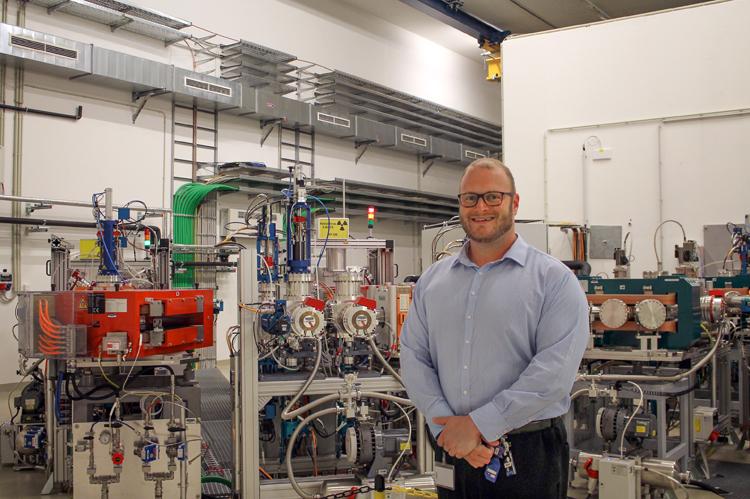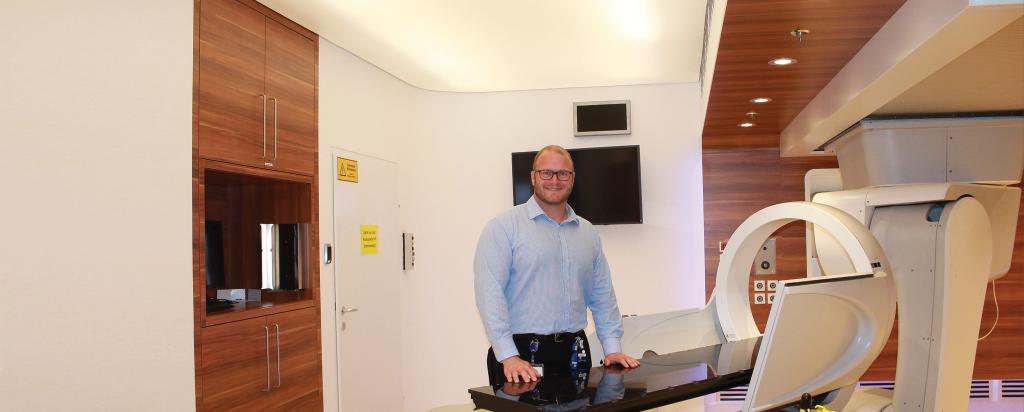

Published on the 7th August 2019 by ANSTO Staff
ANSTO physicist Dr Dale Prokopovich has been undergoing a placement in Austria to participate in the commissioning of Austria’s MedAustron particle therapy facility. MedAustron achieved a milestone with the first use of carbon ions for patient treatment at the facility.
“MedAustron is an outstanding facility and it is beneficial for Australia that he has had the opportunity to contribute to the introduction of the service and gain experience in the use of this advanced technology for patients,” said CEO Adi Paterson.
“It is very good news for cancer patients in this part of the world. Although particle therapy with protons has been available here for two and a half years, carbon ion treatment is a significant advancement for patient treatments,” said Prokopovich.

Prokopovich has been participating in the commissioning of the facility for patient treatment as well as for experimental research.
“I am here to learn everything I can about the requirements for designing and commissioning a facility as well as make a contribution to commissioning new services. This is in anticipation that Australia will one day soon have such a facility,” he said.
“Working with the beam commissioning team, I have been participating in the commissioning of the vertical beamline as well as working on further improving the performance of the beam delivery to ensure faster beam delivery and allow for more patients to benefit from this therapy into the future. For research purposes, we have now successfully delivered high energy protons, up to 800 MeV, for future use in the research room.
“Part of the reason for my placement has been to gain a thorough understanding of how the particle therapy facility with both protons and carbon ions works from patient workflow, treatment planning, operational requirements through to research needs and be able to apply this knowledge for any Australian particle therapy facilities.”
In information for the media, MedAustron said that carbon ion treatment opens up new opportunities for tumours that were previously difficult or impossible to treat. MedAustron has joined the ranks of only six centers worldwide that can combat tumours with both protons and carbon ions.
Particle or ion therapy as a form of radiation therapy makes it possible to reduce radiation exposure in the healthy tissue surrounding the tumour and thus also to reduce the risk of side effects and possible long-term consequences.
This applies to both protons and carbon ions - the two types of particles that are currently used internationally. However, carbon ions offer a significant additional advantage over protons, because they are biologically more effective than protons or x-rays. This means that a higher biological dose of radiation can be administered to the tumour, thereby releasing more destructive power in the tumour cells while still sparing any critical organs near the tumour.
Read more about the launch of the new service, which was attended by the Governor of the Federal State of Lower Austria and numerous MedAustron officials.
ANSTO and representatives from leading Australian hospitals, research centres, universities and industry are proposing the establishment of a new National Particle Treatment and Research Centre to deliver advanced cancer treatment.
A proton therapy facility is under development by the South Australian Health and Medical Research Institute in Adelaide